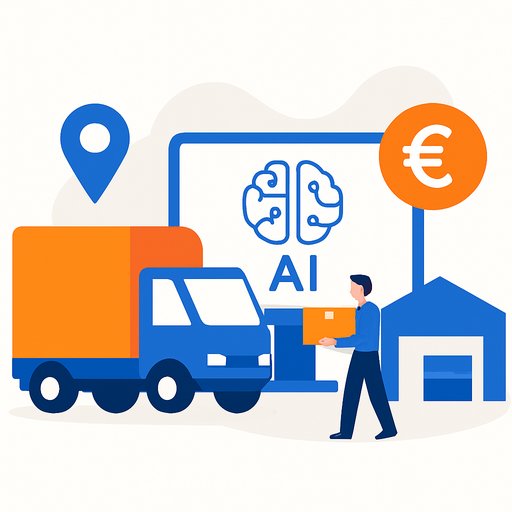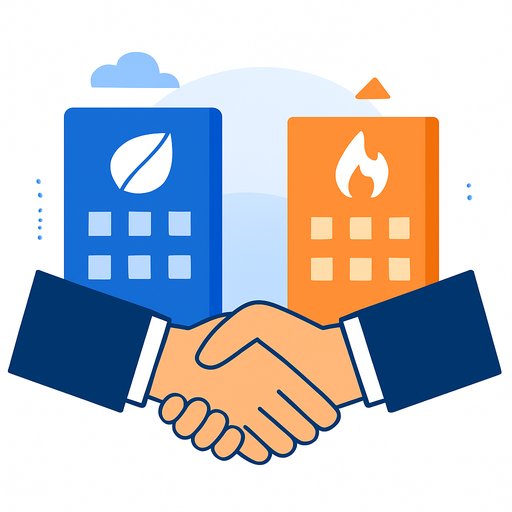Ingka Group acquires Locus to tighten IKEA last-mile operations with AI
Ingka Group, IKEA's largest retailer, has acquired Locus, a U.S. logistics technology company known for AI-based route planning and delivery management. Announced on October 7, 2025, the move brings key last-mile capabilities in-house and is expected to reduce delivery costs by about €100 million ($117 million) annually worldwide.
Locus consolidates planning, dispatch, driver guidance, and live tracking into a single platform. For operations leaders, this means fewer handoffs across providers, higher delivery density, and better control over exceptions-without adding headcount to manage complexity.
Why this matters for operations
- Cost-out with service-up: route grouping, tighter time windows, and fewer empty miles reduce cost per drop while improving ETA accuracy.
- Single control layer: one system to plan, track, and re-route replaces fragmented tools across countries and partners.
- Faster feedback loops: real-time visibility enables proactive exception handling and better first-attempt delivery rates.
- Lower emissions: smarter routing and higher vehicle utilization cut total miles driven.
What changes in the stack
Locus sits alongside Ingka's existing digital investments-Made4net for warehouse management and TaskRabbit for assembly-to close the loop from fulfillment to doorstep. Expect tighter links between order management, WMS, and last-mile dispatch so slots, inventory, and routes are planned as one system.
- Planning: demand forecasting, capacity modeling, and route building informed by historical and live data.
- Execution: driver app guidance, dynamic re-optimization, proof-of-delivery, and real-time status sharing with customers.
- Control tower: centralized dashboards for SLA adherence, utilization, and exception workflows.
Rollout and structure
Pilots start in the U.S. and U.K., with a global rollout to follow. Locus will remain operationally independent and continue serving non-Ingka clients. Ingka Investments led the deal; terms were not disclosed. Locus was valued at $300 million in a 2021 round backed by GIC, Tiger Global, and Qualcomm Ventures.
Leadership signals
Tolga Öncü, Head of IKEA Retail (Ingka Group), said the move brings a critical part of fulfillment under direct control to increase delivery speed and flexibility. Parag Parekh, Global Chief Digital Officer for IKEA Retail, emphasized building the digital capabilities needed to meet rising customer expectations with consistent quality and reliability. Locus CEO Nishith Rastogi noted the company will keep serving its wider enterprise base while gaining scale and resources for deeper R&D.
KPIs to track from day one
- On-time delivery rate (by promise window)
- Cost per order and cost per mile
- Route adherence and driver idle time
- First-attempt delivery success rate
- Vehicle utilization and drops per route
- Contact rate per order and exception resolution time
- Emissions per delivery
Implementation checklist for operations leaders
- Data readiness: standardize addresses, geocoding, time windows, and service levels across markets.
- Capacity rules: define vehicle constraints, load times, cutoff times, and curbside restrictions by region.
- Sloting strategy: align delivery slots with route density to minimize long tails and failed attempts.
- Exception playbooks: codify rules for re-routing, partial deliveries, redeliveries, and customer communications.
- Change management: train dispatchers and drivers on new workflows, incentives, and proof-of-delivery standards.
- Partner contracts: update SLAs with 3PLs to reflect real-time data sharing and performance transparency.
- Privacy and security: confirm data retention, driver tracking policies, and regional compliance.
Environmental and fleet implications
Higher route density and dynamic re-planning reduce miles driven and idle time-key levers for emissions reduction in last-mile logistics. If paired with EV deployment and smarter sloting, the effect compounds across urban markets.
For context on transport emissions and efficiency opportunities, see the International Energy Agency's overview here.
Context: demand and footprint
Online now accounts for 28% of IKEA retail sales, up from 11% in 2019-pressure that last-mile must absorb without inflating costs. The acquisition complements prior digital moves (Made4net, TaskRabbit) and aligns with Ingka's U.S. expansion: a $213 million Manhattan real-estate purchase and a $2.2 billion multiyear program to grow retail and fulfillment capacity amid tariff pressures.
What to watch next
- Pilot results in the U.S. and U.K.: ETA accuracy, cost per drop, and first-attempt rates.
- Integration depth with WMS/OMS: sloting tied to real inventory and carrier capacity.
- Customer-facing visibility: live tracking adoption and contact rate reduction.
- Global scale-up risks: address quality, regional regulations, and partner readiness by market.
Sources and further reading
- Ingka Group newsroom updates: ingka.com/newsroom
Upskill your operations team on AI
If you're building internal capability around AI for logistics and fulfillment, explore AI upskilling for operations roles.
Your membership also unlocks:






